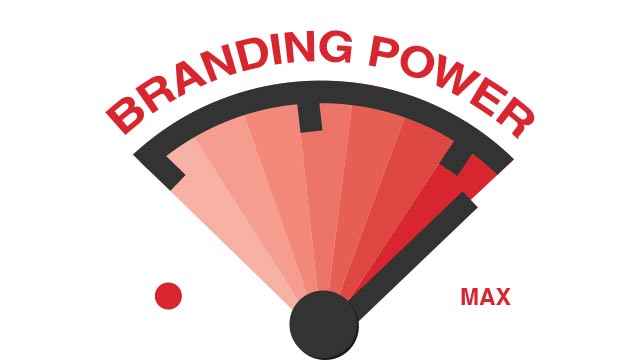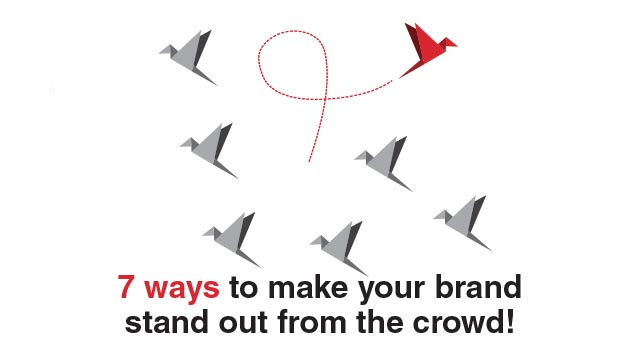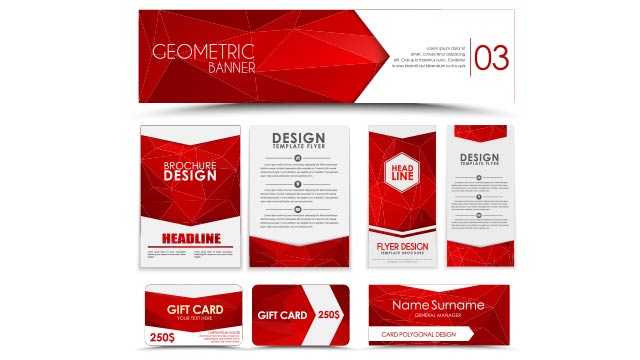Key Elements of Branding
Key Elements of Branding

Elements are the fundamental building components of matter.
Remember the periodic chart of elements from chemistry class? All those squares with two-letter symbols and numbers on them?
Just like that, branding has its own elements. But of course, not like those chemistry elements!
All brands consist of the same branding components such as logo, core values, brand colors, user experience and more.
Together, these branding elements create a brand identity, which designers utilize to create an interesting and captivating brand design.
This blog entails everything you need to know about the key elements of branding and their importance.
Let’s start with the basics…
What Is Branding?

In its most basic form, branding consists of words and visuals, but it goes well beyond that.
It’s the way you welcome guests, the tablecloth you use, and the way you post on social media.
Everything that influences customer experience, both material and digital.
The development of a brand identity is facilitated by brand aspects—which are kind of crucial. Everything about your company, including social media post-editing, customer communications, font style, and YouTube video end-screens, is influenced by your brand identity.
Well, building a successful brand doesn’t happen overnight.
The branding elements used by the most popular brands in the world show that successful brands do follow similar patterns.
First, a number of elements come together to form an effective brand—each with a certain functionality.
The absence of one or more brand aspects also affects the brand’s overall growth and functioning.
Read also: 9 Types of Branding with Examples (And Applications)
The Importance of Good Branding
The success of your business can be greatly impacted by having a strong brand as it can provide you with an advantage over your competitors and increase traffic to your website and social media.
You can start using that relationship to your advantage as soon as you establish a connection with your target audience.
Remember whether you use branding or not, your company will develop a reputation. But, by developing a good brand, you may create a relation with your customers that goes beyond the act of buying and selling products/services. This highlights the importance of branding for small businesses.
You have power over the impression and image of your brand when you intentionally brand it, and you can also influence the story.
Read also: Why Use a Branding Agency? Perks and Benefits
What Are Branding Elements?

More than 90 percent of the total brand is made up of non-visual elements of the brand ecosystem.
The work done within the strategy gives birth to even the branding aspects that are designed into the visual environment.
The key elements of your brand are as follows:
- Brand identity
- Brand voice and message
- Core values and mission
- Brand targeting
- Brand proposition
- Brand experience
- Brand Storytelling
- Brand positioning
Let’s discuss each element in detail.
1- Brand identity
Your public persona, along with your core beliefs and the message you want the audience to take from your writing, make up your brand identity.
A brand’s unique design elements that consumers can quickly identify are referred to as its visual identity. This covers fonts, brand name, logo design, colors scheme, and more.
While not every component of a brand identity is visual—consider trademarked music—a big portion of traditional branding is concentrated on visual components and the message they convey.
Your brand should have an evergreen quality, which allows it to endure harsh times without becoming obsolete.
Avoid establishing your branding on trends in design or pop culture allusions to accomplish this.
In 5 years or so, will someone recognize the importance of this or even understand it?
Go for classic and everlasting branding components.
2- Brand Voice and Message

Then comes brand tone and voice. It refers more to how your company appears to customers when you connect with them via your message rather than marketing material.
For example, are you amusing and humorous?
Or are you more professional and scholarly?
Because it enables you to communicate a brand personality, your tone, brand voice and message are important branding elements.
So, make an effort to choose a voice and tone that is relevant to your company’s offerings and target market. Then apply it to everything your company says online.
3- Core Values and Mission
The fundamental ideas and concepts that your business support is known as its brand values
People may relate to your brand on a deeper level than its products and services when its concepts are evident.
Companies with related brand values give customers the impression that they are choosing a brand that shares their values.
A brand’s core values and mission develop over time and become a guide for actions and communications with customers and yes competitors too!
Read also: Branding and Creative Design—An Obligatory Feature of A Company
4- Brand Targeting

Here comes the best part.
Finding the market niche you want to penetrate is known as brand targeting.
This involves determining the traits of your ideal customer group in order to categorize your target market.
Well, this can be divided into a number of factors, such as demographics, age, income level, personality and behavioral characteristics.
For example, the purpose of buying the products, purchase patterns, etc.
5- Brand Proposition
To be precise, the brand proposition is what your company offers to its consumers
For instance, the quality of the most important feature of your products and services.
Do you want people to have faith in your brand?
Then the core of your brand proposition must be trust.
Or is it your pledge to help customers in getting the best value for their money?
Whatever your brand proposition is, you must make it obvious to your target audience in order to emotionally connect with them. a strong proposition should be able to convert prospects into potential customers.
Typically, advertising campaigns are created with a distinct brand proposition in mind.
For instance, the Apple Watch advertisement aggressively targets a larger market by promising a product with more features than before at a lower cost. The slogan is clear cut and self-explanatory.
6- Brand Experience

The way your customers engage with your products, services, team and other touchpoints throughout your brand journey (like social media) is referred to as brand experience.
Brand experience entails everything from a customer’s interaction with a salesman to the usage of your products.
By providing an exceptional experience after the sale, you can establish enduring relationships with customers who make repeat purchases.
Better yet, consumers who have had positive experiences with your company recommend you to their friends and family; this in turn expands your customer base.
Read also: Why Branding and Creative Design Is Valuable in Corporate Progress
7- Storytelling
Every brand has a history, even though it’s not always the best one to share.
A storytelling framework is frequently the cornerstone of a marketing plan.
But take caution from your audiences’ point of view, they—not you—are the hero.
The only story that will connect with them is the one that speaks to their journey, their identity, the difficulties they face and their life goals.
Thus, we can say that: a brand story is a narrative from your brand rather than an account of the brand.
8- Brand Positioning

Now comes the market positioning of your brand.
It entails your audiences as well as your competitors. Finding your core audience is essential to understanding where your brand is positioned because they will determine your presence.
A tip—you may also want to think about how your pricing point sets you apart from the competition.
Create a matrix first by selecting the two areas that are most important to your company. You might employ the quality range that your brand offers to customers—from low to high—on the horizontal line.
This will show you the variety of consumers your brand is drawing in.
You could think about the price point on the vertical line. Do you sell pricy or inexpensive products?
After positioning your brand in the matrix, it’s a good idea to find out where your immediate competitors are positioned.
Read also: Branding Vs. Rebranding: Understanding the Key Differences
Brand Consistency: Your Brand Mantra

After creating and defining a relevant brand, you need to start implementing it consistently with partners, staff, consumers and other shareholders.
The branding process must be successful with consistency in mind.
It’s simple to make a mistake “just this once,” either because you are too busy or because you believe your work will be evaluated or utilized internally.
But if you start to weaken, your strong brand will become entirely insignificant. Employees or not, nobody will truly understand or recall your brand until it remains consistent throughout all of your marketing materials.
No matter how much money you spend on marketing, it becomes impossible to create brand awareness without consistency.
With each stumble, your well-crafted brand identity—which you invested a great deal of time creating—becomes increasingly unreliable.
FAQs
What are the 5 elements of branding?
The main 5 elements of branding include brand message, brand story, brand positioning, brand personality and brand values. You may think that your branding is complete when you have a brand slogan, logo, website or business card. But that’s not the case! You have to thoroughly adapt the essential 5 elements of branding for successful brand growth.
What are the key factors of branding?
Branding is the development of a distinctive identity for a business or a product. A recognizable logo, concise message, unique fonts and colors are a few key factors of branding. Trust is earned from customers by being dependable and showing high-quality content. A target audience can be reached through effective branding that conveys ideals and emotions. Your brand can be strengthened by great customer experiences and consistency across marketing material. Branding is about creating a unique impression that sets a product or business apart from competitors.
What are the 4 Vs of branding?
When it comes to branding of your business, the 4 Vs are like a map.
1- Being visible is to others is the first step
2- Value is the next step; providing something beneficial
3- The next step is voice, which is to speak in a memorable manner
4- Validation is the last step that provides evidence of your reliability
These 4 Vs help businesses create likable, recognizable and trustworthy brands.
What are the 3 Cs of branding?
The 3 Cs of branding are very simple to recall
1- Clarity comes first; knowing who you are
2- Consistency comes next; always acting the same way—just like a good friend
3- Constancy comes last; staying present at all times to ensure that people don’t forget your brand
These 3 Cs help companies in developing a brand that is simple for consumers to identify and comprehend.
Final Word
Developing a powerful brand is a continuous process that requires ongoing improvements and modifications. However, you need to have the essential branding elements if you want your brand to succeed and eventually reach a wide audience.
So, you must ensure that your brand incorporates the above-mentioned 8 key elements of branding.
For more information, get help from our branding experts in Dubai.
